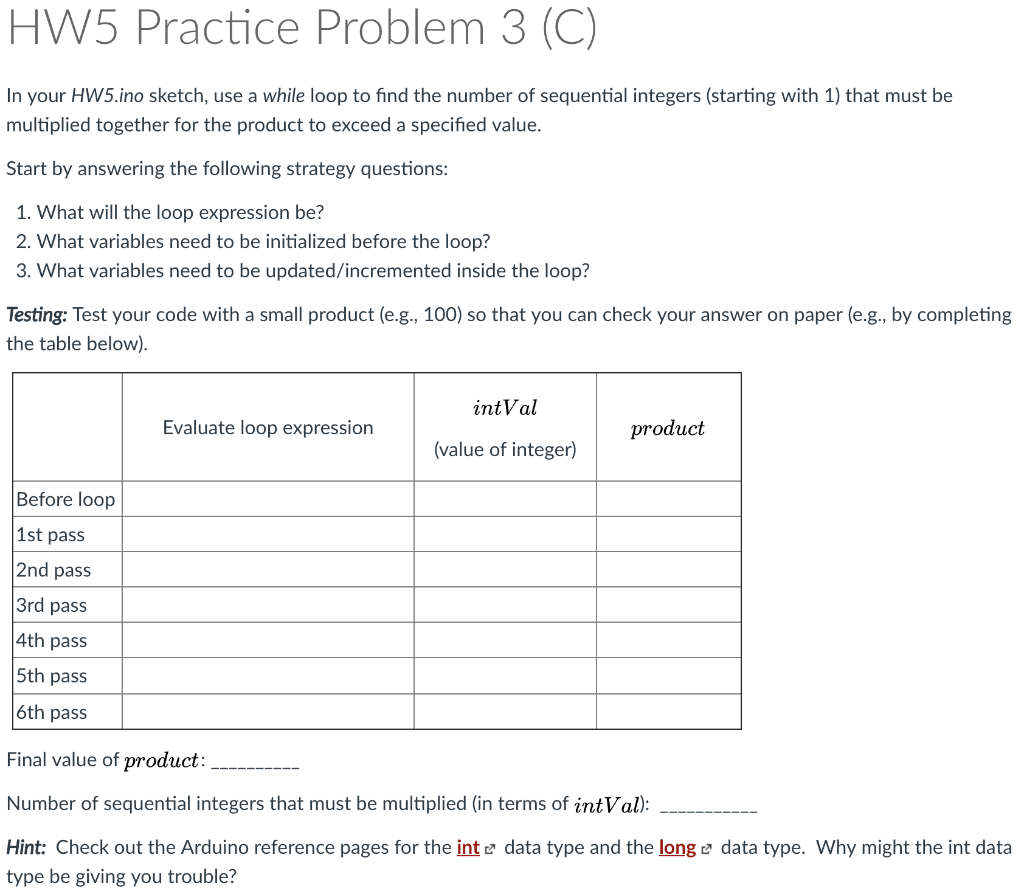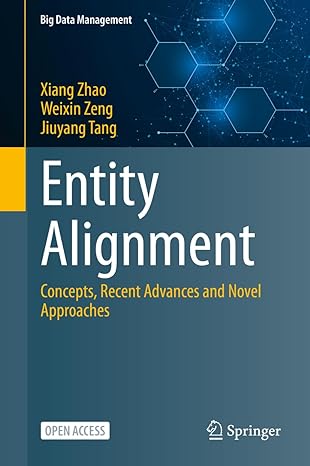Answered step by step
Verified Expert Solution
Question
1 Approved Answer
Note: HW5.ino is what you will need to name this HW for not a provided file. HW5 Practice Problem 3 (C) In your HW5.ino sketch,


Note: HW5.ino is what you will need to name this HW for not a provided file.
HW5 Practice Problem 3 (C) In your HW5.ino sketch, use a while loop to find the number of sequential integers (starting with 1) that must be multiplied together for the product to exceed a specified value Start by answering the following strategy questions 1. What will the loop expression be? 2. What variables need to be initialized before the loop? 3. What variables need to be updated/incremented inside the loop? Testing: Test your code with a small product (e.g., 100) so that you can check your answer on paper (e.g., by completing the table below) intVal Evaluate loop expression product (value of integer) Before loop 1st pass 2nd pass 3rd pass 4th pass 5th pass 6th pass Final value of product: Number of sequential integers that must be multiplied (in terms of intVal) Hint: Check out the Arduino reference pages for the int e data type and the long data type. Why might the int data type be giving you trouble? Final output: Use Serial.print) and Serial.println) to display the number of sequential integers that must be multiplied together for the product to exceed one billion. Expected results: The product of 13 sequential integers exceeds 1000000000 HW5 Practice Problem 3 (C) In your HW5.ino sketch, use a while loop to find the number of sequential integers (starting with 1) that must be multiplied together for the product to exceed a specified value Start by answering the following strategy questions 1. What will the loop expression be? 2. What variables need to be initialized before the loop? 3. What variables need to be updated/incremented inside the loop? Testing: Test your code with a small product (e.g., 100) so that you can check your answer on paper (e.g., by completing the table below) intVal Evaluate loop expression product (value of integer) Before loop 1st pass 2nd pass 3rd pass 4th pass 5th pass 6th pass Final value of product: Number of sequential integers that must be multiplied (in terms of intVal) Hint: Check out the Arduino reference pages for the int e data type and the long data type. Why might the int data type be giving you trouble? Final output: Use Serial.print) and Serial.println) to display the number of sequential integers that must be multiplied together for the product to exceed one billion. Expected results: The product of 13 sequential integers exceeds 1000000000Step by Step Solution
There are 3 Steps involved in it
Step: 1

Get Instant Access to Expert-Tailored Solutions
See step-by-step solutions with expert insights and AI powered tools for academic success
Step: 2

Step: 3

Ace Your Homework with AI
Get the answers you need in no time with our AI-driven, step-by-step assistance
Get Started


